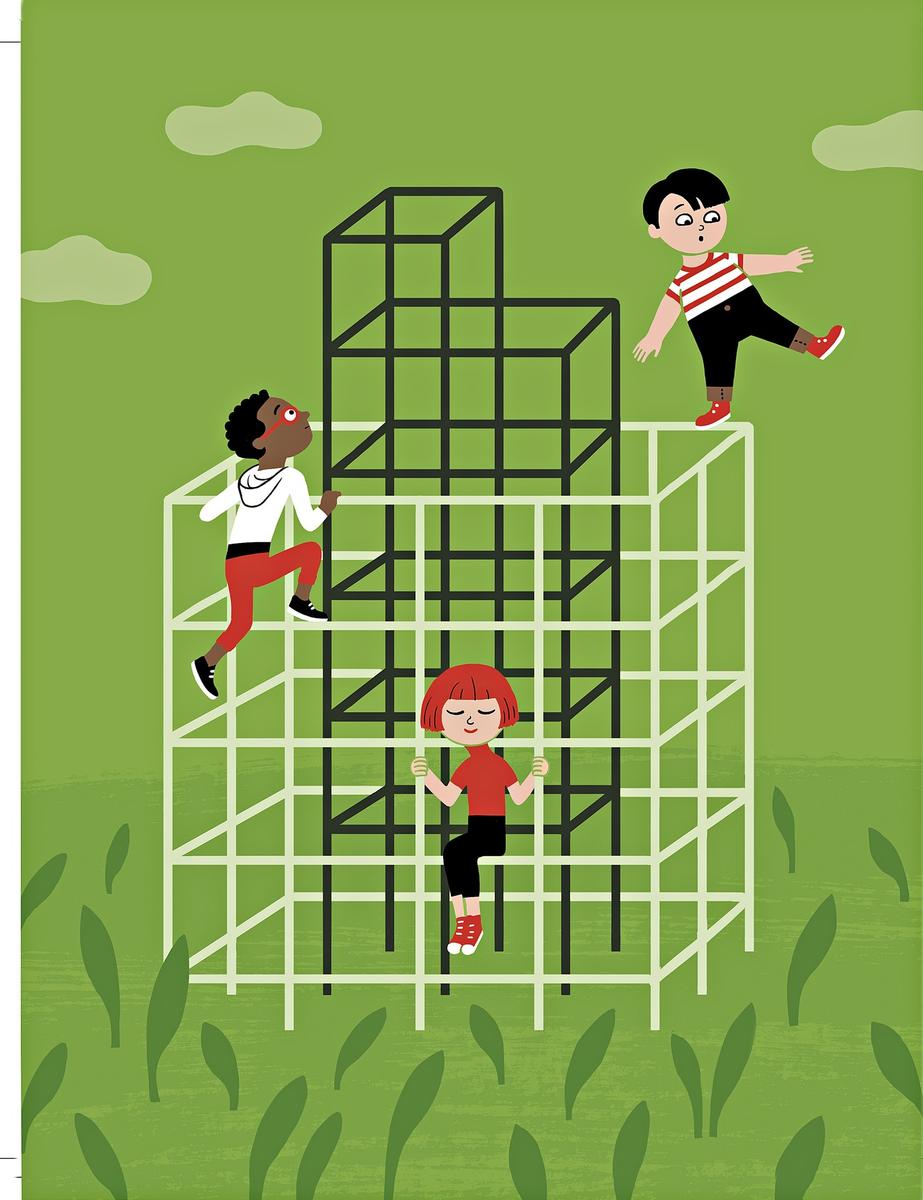
The steady rise of obesity in Latino kids is a troubling trend in the U.S. American kids in general have grown heavier in recent decades, but Latino children are at the greatest risk of all. Thirty-nine percent are overweight, compared with 35 percent of black kids and 29 percent of white kids. Among those overweight Latino kids, almost half are obese.
The problem goes beyond looking a little plump. “Unfortunately, when kids are this heavy, their whole quality of life is compromised,” says Amelie G. Ramirez, Dr.P.H., director of San Antonio’s Salud America!, a nonprofit research and advocacy group focused on improving Hispanic families’ health. In the short term, overweight kids are more prone to bullying and are less likely to join in physical activities than their normal-weight peers. And because chubby kids are at high risk for becoming unhealthily heavy adults, the long-term consequences of a childhood weight problem are even more worrisome. “A major issue is that the rate of diabetes, which is linked to obesity, is extremely high,” says Fernando Mendoza, M.D., professor of pediatrics at Stanford University, in California. More than one in seven Hispanic adults are diabetic, making them prone to nerve trouble, organ failure, and premature death.
Luckily, obesity isn’t destiny for our kids. While some Latinos may have genes that might make them predisposed to carrying extra pounds, environmental factors play a much bigger role. “Where people live and how they live count the most,” Dr. Mendoza says. “Parents can’t change everything about their environment. But there are things they can do to make a big difference.”
Home, Healthy Home
Get the facts. Tackling weight problems starts with awareness. It can be hard for a loving mom to see anything wrong with a round-cheeked, well-fed toddler. “Our research shows that Latino parents tend to show concern when their child is obviously obese, but not when they’re overweight,” says psychologist Javier Rosado, Ph.D., a Florida State University College of Medicine professor and the director of Salud Immokalee, a free local program in Immokalee, Florida, in which dieticians and doctors teach kids and their parents about the benefits of healthy foods and exercise.
“Often, the older generations of a family will tell a new mom that it’s best for babies to be chubby,” says Claudia Gonzalez, a registered dietitian and coauthor of Gordito Doesn’t Mean Healthy. “That’s why it’s crucial that moms take their kids to a doctor early and insist on regular weight checks,” Dr. Rosado says.
Limit portions and use smaller plates. Parents and other family members also need to learn that it’s okay—healthy, even—to deny kids second helpings and extra treats. “In our culture, food is a way that love is expressed,” Dr. Mendoza says. “Serve on smaller, salad-size plates and the total amount of food kids take in will be less,” Dr. Ramirez adds.
Kid-size tableware will also help with another culturally ingrained habit: pushing children to finish what they’re served. “There’s a clean-your-plate tradition in many Hispanic families,” Dr. Mendoza notes. But little bellies fill up sooner than you might think. Smaller plates will remind you to serve—and worry about waste—less.
Cut down on sweets. In many Hispanic homes, however, hearty homemade meals aren’t the problem—snacks and sweets are. In one 2009 study, researchers from Texas’s Baylor College of Medicine found that two out of every three foods Latino children consumed included pizza, chips, desserts, burgers, soda, or juice. Rather than using treats as a reward, parents should eliminate as many high-calorie packaged snacks, including drinks, from the home as you can and stock up on prepared portions of whole-grain snacks, fruits, and veggies.
“They may balk at first, so it can be helpful to provide kids with two healthy choices,” Dr. Rosado says. “If your child asks for cookies, rather than just saying no, you might ask, ‘Would you rather have an apple or some pineapple instead?” Oralia Casillas, a mom from Commerce City, Colorado, finds that her kids get more excited about healthy foods when they are prepared in a visually appealing way. After the family doctor told Casillas that her 11-year-old daughter, Narali, was overweight, he suggested a free weight management program for parents and kids at Children’s Hospital Colorado, where Casillas learned tricks for preparing healthy food that her kids, now 12 and 5, “actually enjoy,” she says. “My favorite trick is cutting watermelon into sticks. My kids will ask when they can have ‘watermelon fries’ again.”
Get kids cooking. Of course, modern life can make it hard to shop and prepare fresh foods like these. Busy working parents would rather relax with their kids than rush around the kitchen in the small amount of time they are off work. That’s one reason to enlist kids’ help in food prep. “Bring them into the kitchen, so they can smell, taste, and get involved,” Dr. Ramirez suggests. “Even preschoolers can tear lettuce or drop cherry tomatoes into a salad. This allows you to spend a little extra time with your kids and it makes them more interested in creating healthy meals.”
The Wider World
Opt for fresh food over fast food. For some kids, weight problems are made worse not so much by what’s happening in the home but what’s available outside it. Many Hispanic families live in communities where healthy choices are scant and sweets and treats are all too accessible. Latino kids are more likely than other children to attend schools near fast-food restaurants and convenience stores. And tempting advertisements draw them in. In 2009, a research team from the University of California in Los Angeles and several other universities found that outdoor ads for fast food and sugary drinks are up to nine times more prevalent in low-income Latino neighborhoods than in high-income white areas. These convenience foods can tempt time-and cash-strapped parents too. “When you realize you can feed your family 3,000 calories for $8, that’s tough to pass up,” Dr. Mendoza says.
If healthy, affordable food seems hard to come by, carve out time to travel to the closest supermarket you can, and be choosier when you get there, Dr. Rosado urges. Local, in-season produce tends to taste best and cost less, but frozen or canned fruits and vegetables are fine substitutes, he says. Beans and brown rice are inexpensive and nourishing. “It’s hard work and frustrating, but once you realize you’re up against a system that will try to get you to buy unhealthy food that costs more than it should, you can make a game out of it,” Dr. Rosado says. “Bring your kids and show them how the cereals on the middle shelves are more expensive and often have more sugar. Then encourage them to pick a choice from the bottom shelf instead and see how much you saved in money and calories.”
Shop smarter. Casillas found that something as simple as making a list made a big difference in shopping smarter. “I used to just go to the store and throw whatever I thought my kids would like to eat in the cart,” she says. “Now, I buy foods that are more nutritious and our bill is less than it used to be.”
Fit in exercise. It might also take extra work to find places in your neighborhood where kids can exercise. “Over and over again, I hear Latina moms say that they just don’t think there are enough safe spaces where they can send their kids out to play,” says Dr. Ramirez. Not surprisingly, children who live in neighborhoods their moms consider unsafe tend to watch more TV, which is associated with higher rates of obesity. For these families, a brisk 30-minute family walk after meals is a good bet. This not only helps get kids’ hearts pumping, but it also allows you to literally “walk the walk” when it comes to teaching kids the benefit of physical activity. “The best way to help kids lead a happy life is to model a healthy lifestyle yourself,” Dr. Ramirez says.
Team up with other families. Even better, become a trendsetter. “Hispanic families are sociable, so tap into that,” says Dr. Ramirez. Moms can link up to take their kids on a walk or bike ride around the neighborhood together. Recently, in San Jose, California, a group of dads successfully lobbied for resources to build a soccer pitch in a town that had little green grass. “Don’t be afraid to approach your city council leaders and urge them to incorporate more walking and play areas in new construction projects,” Dr. Ramirez says.
Many towns and cities are adopting a popular Colombian tradition known as ciclovía, in which streets are blocked off to car traffic once a month or so, allowing kids to run, bike, and play freely. Ruby Lopez and her family and friends play soccer, run races, ride bikes, and do Zumba. “Ciclovía is what inspired us to get Ruby a bike for her birthday,” says her sister. “And she’s been riding it ever since!”
It’s the love that mamis and papis have for their children that makes Dr. Rosado hopeful that Latinos’ childhood-obesity problem will one day be a phenomenon of the past. “Something that’s so special and unique about our culture is the way that we prioritize children,” he says. “Latino parents work super hard to give kids what they need, and once they find out what’s best they will do everything they can to make that happen. With some more information and help from their communities, these kids are on course to becoming the healthy adults we all want them to be.”
Understanding BMI
Doctors monitor kids’ growth by calculating their BMI, or body mass index. This measurement of a child’s weight relative to his height is compared to that of other kids the same sex and age. (Calculate your child’s BMI and see how it compares to his peers’.)
While BMI isn’t a perfect measure of whether a child is at an optimal weight—a tall, muscular child might have a BMI in the overweight range and still be healthy—it’s a key tool to assess how a child is growing. “If she is jumping percentiles from year to year, then that’s a red flag that she might be gaining weight too quickly,” says Dr. Fernando Mendoza, M.D., professor of pediatrics at Stanford University.

